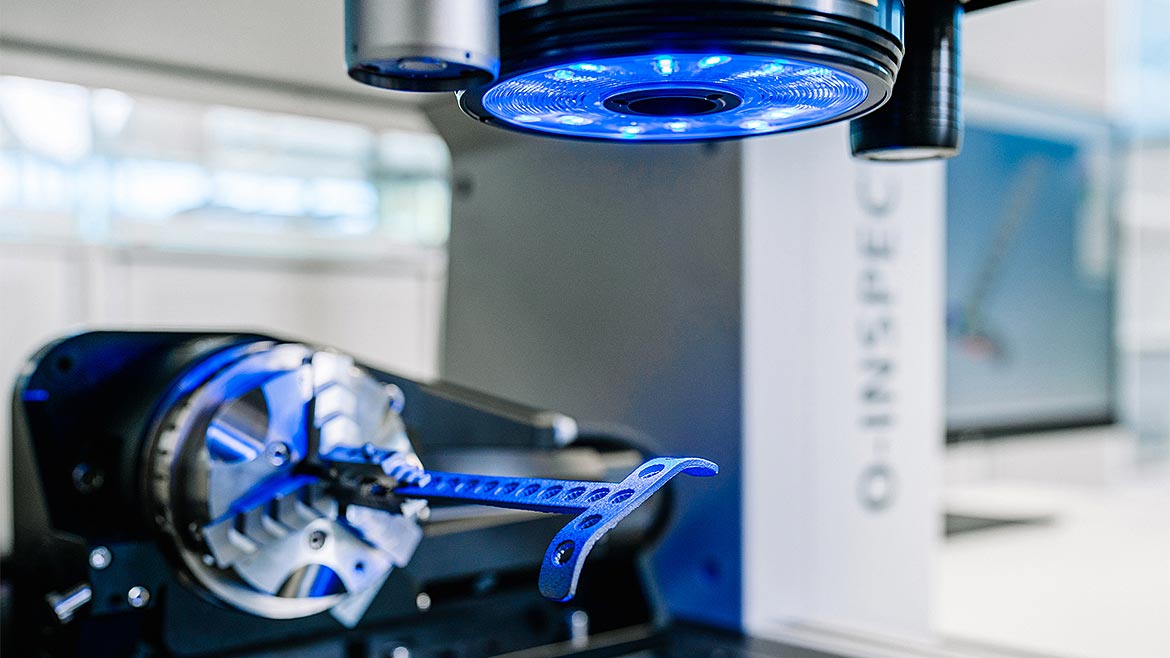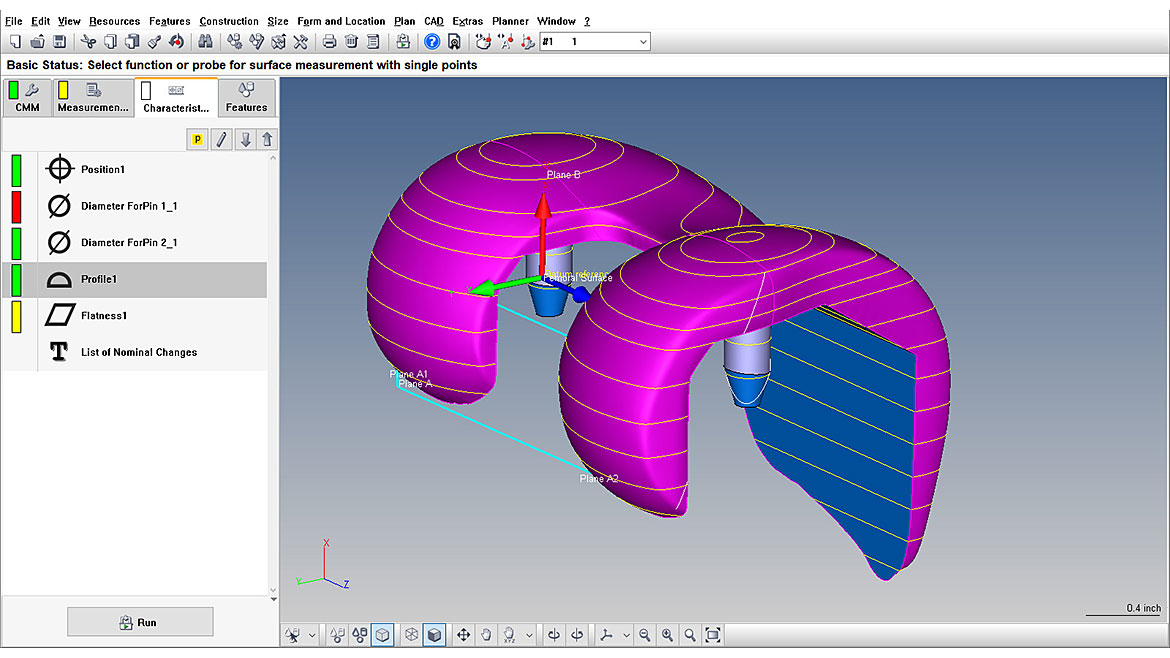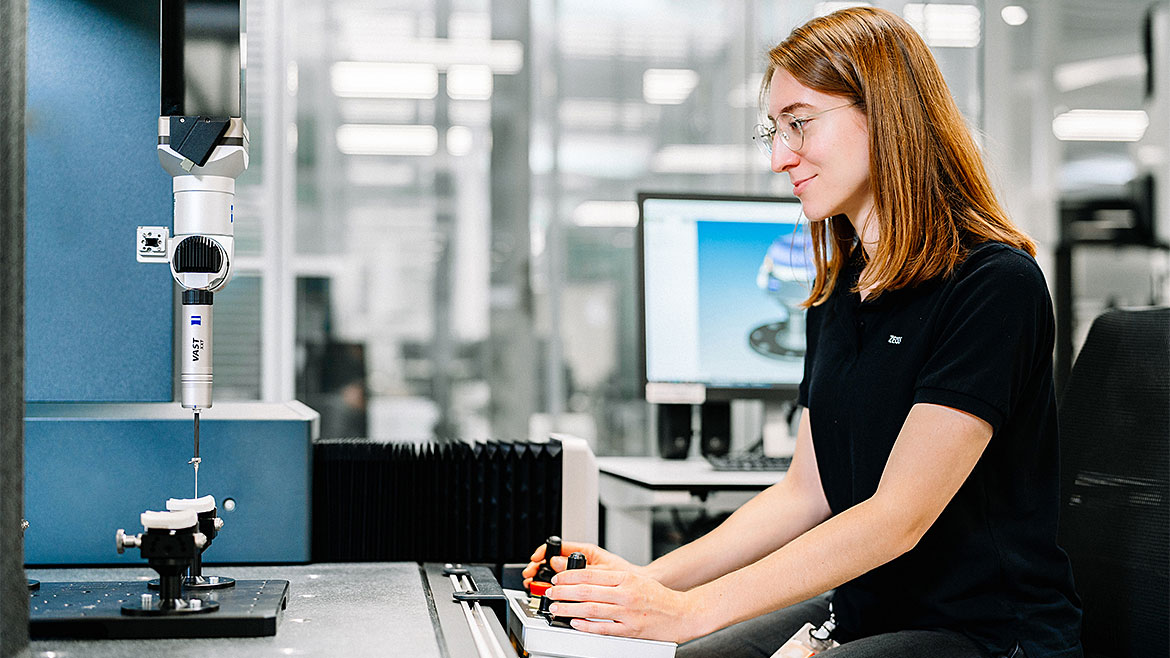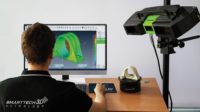What level of quality do you feel is required in orthopedic implants, pacemakers and other critical, life-sustaining medical devices? The highest quality, of course!
It’s not a surprise that quality requirements are stringent for medical device manufacturers. A careful validation of the inspection process for medical devices is part of what ensures their high level of quality. These very important requirements extend to their use of coordinate measuring machines (CMMs) and metrology software. After all, CMMs and the software used to write CMM-based inspection routines remain a key quality tool for many manufacturers.
What is surprising is the level of confusion surrounding how to validate the inspection process of a medical device. Does the CMM itself need to be validated? Does the metrology software need to be validated? Does the CMM program need to be validated? What should the medical device manufacturer do to ensure that their CMM-based inspection processes provide reliable and trustworthy results? What does a thorough validation approach really entail?
Medical device manufacturers must be able to confidently answer such questions. Knowing the answers will make certain that their inspection processes are just as thoughtfully validated as their design and manufacturing processes. Fortunately, there are clear best practices regarding validation for CMM-based inspection processes — let’s explore the key points.

The CMM hardware alone is not the only aspect subject to validation.
The Three Hallmarks Of Effective Validation
The FDA 21 CFR Part 820 definition of validation states that validation "means confirmation by examination and provision of objective evidence that the particular requirements for a specific intended use can be consistently fulfilled." There are three important concepts contained within this densely worded definition:
- First, a validation process includes defined requirements
- Second, those requirements pertain to a specific intended use. And finally,
- A validation process includes qualification activities that generate objective evidence which indicates those requirements are fulfilled.
Keep in mind these three hallmarks of effective validation — defined requirements, relevance to a specific intended use, and evidence-generating qualification activities — regardless of the solution or process undergoing validation.
Validating The CMM-Based Inspection Process
How do you apply this understanding of validation to the various aspects of a CMM-based inspection process? The "intended use" of these quality tools guides the answer:
The CMM
The specific intended use of the CMM is to facilitate accurate, repeatable measurements of medical device components (or other workpieces) within the manufacturer’s given environment (an inspection lab, production area, etc.). This intended use gives rise to a number of requirements, including:
- The requirement that the CMM performs to an expected level after being installed in the manufacturer’s environment
- The need for it to be traceable to national standards
- The need for the CMM’s environment to be suitably controlled with regards to temperature and humidity
- The requirement that CMM users are trained to operate and maintain the CMM system.
Given such requirements, it’s clear that the CMM hardware alone is not the only aspect subject to validation. Realistically, it is the "CMM system" — the collection of CMM hardware, environment, users and other related infrastructure — that addresses the intended use. "Generic" documents like CMM accuracy specifications are not, by themselves, sufficient to proclaim that a CMM is validated, although they are important.
In addition, qualification activities that verify these requirements have been fulfilled are necessary:
- Documentation of user training
- Confirmation of environmental control systems
- CMM acceptance results (performed on-site in the CMM owner’s environment) using artifacts traceable to national standards bodies (NIST, PTB).

The need to validate an inspection process — rather than the metrology software — is why it is not possible to simply purchase a metrology software product that comes validated "off the shelf."
Metrology Software
Next, examine the metrology software used to create the programs or inspection routines carried out by the CMM. NIST or PTB certifications are available for many metrology software packages. While these documents are important evidence that the software algorithms adhere to known standards, they are not specific to the intended use of the software, which is to write a measurement program.
In fact, metrology software packages are analogous to programming languages, like C++ or Python. There is no way to validate these languages with intent that all programs written thereafter are inherently validated; it is the program (written using the programming language) that must be validated.
Inspection Program Written Using The Software
For CMM-based inspection programs, the "inspection process" is the program’s ability to produce accurate measurement results for identified drawing requirements within certain parameters, including:
- Demanded cycle time
- Real workpieces being measured
- Necessary probe tooling and fixturing
The inspection process should be validated just as the infrastructure surrounding the CMM should be validated as the "CMM system."
The need to validate an inspection process — rather than the metrology software — is why it is not possible to simply purchase a metrology software product that comes validated "off the shelf." There are a few catchphrases that manufacturers may encounter when selecting metrology software products, such as "compliant" or "certified." These meanings should be evaluated judiciously.
Other Factors
A software that is "compliant" with key FDA regulations, such as 21 CFR Part 11 or Part 820, is designed to include functions that make it easy for users to satisfy such requirements when they include the product within their processes. A "certified" software may come with supporting documentation that it has met some external standard or level of performance (ex: NIST or PTB testing for specific software algorithms). While both terms describe useful features of a metrology software, neither imply that the metrology software is validated for an intended use.
Developing a specific program using that software is necessary. That program will be used and validated within the medical device manufacturer’s environment and for their specific measurement application.

ZEISS offers a validation service to support customers using ZEISS CMMs and CALYPSO metrology software, in addition to online training courses.
The Limitations Of GR&R
The good news is that many medical device manufacturers are already implementing some form of this approach. The inspection process requirements identified previously (the need to measure certain workpiece characteristics with accuracy and repeatability under "actual use" conditions including a variety of operators and workpieces) may sound familiar. Many manufacturers already verify that these requirements are satisfied by performing a Type 2 study, or Gage Repeatability and Reproducibility study (GR&R).
GR&R studies are effective in this role because they challenge the performance of many variables within the inspection process, asking these vital questions:
- Is the fixture sufficiently repeatable?
- Is the inspection process resistant to operator influence?
- Does the measurement program deliver dependable results across a representative sample of real workpieces, each with unique deviations?
While a GR&R study is an important qualification activity when determining if the requirements relative to a specific intended use are met, it’s also known that GR&R is primarily a study of repeatability, not accuracy.
A Two-Fold Approach To Inspection
The approach to ensuring that the inspection process produces accurate results in addition to repeatable results is two-fold. One, it is imperative that metrology software programmers are appropriately trained. Two, a measurement plan design process (MPDP) should be applied during the development of the inspection program (measurement plan).
A measurement plan design process is similar to a ‘design of experiment’ approach, and follows these major steps:
- First, an ‘in-depth’ measurement plan is created. This ‘in-depth’ program should include detailed scanning strategies and high densities of gathered data to serve as the trusted benchmark for measurement accuracy.
- Next, recognizing that this ‘in-depth’ program is likely too slow for production requirements, reduce scanning coverage, increase scanning speeds, apply filtering/outlier elimination, and make other changes to optimize cycle time.
- Finally, a GR&R study should be performed to ensure that the optimized measurement program still produces results that are sufficiently close to those from the ‘in-depth’ version.
Both the CMM system (CMM hardware, environment and surrounding infrastructure) and the inspection process (program, fixturing and probe tooling) must be validated for their intended use measuring medical device components. Taking these requirements into account, manufacturers may find it extremely useful to structure the validation process according to a "model," or a framework. This model can clarify what activities must occur and in what order.
The V-Model Meets The Needs Of The Application
A widely used and recommended validation model is the "V-model." The V-model is employed in medical design, manufacturing, pharmaceutical and even software development disciplines.
The V-model helps users organize both their requirements and the qualification activities which demonstrate if the requirements are met. If you’ve ever encountered the terms URS (User Requirement Specification) or IQ/OQ (Installation Qualification/Operation Qualification), those terms more properly belong within the framework of the V-model.
Effective use of the V-model for validation makes it straightforward to ensure that requirements are defined according to the needs of the application. The V-model also ensures that each requirement is verified by a corresponding qualification activity.
Find A Knowledgeable Resource To Validate CMM Systems And Inspection Processes
It is key to find a vital resource you can use for further guidance and clarity on validation for CMM-based inspection processes. Training courses should include:
- Developing requirements for complying to FDA regulations 21 CFR Part 11 and Part 820
- Detailed information on the measurement plan design process
- Detailed information regarding the necessary qualification activities for validation.
Through education and service plans, it is important to help medical device manufacturers validate CMM systems and inspection processes in a way that is both thorough and approachable.



